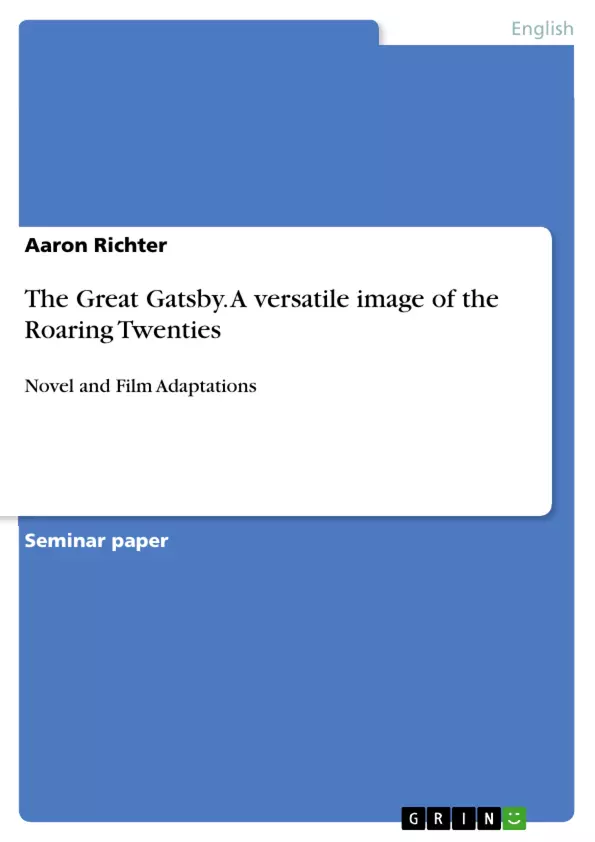Present-day's teenagers are confronted with two major points of criticism concerning their current "lifestyle". The first would be excessive partying with alcohol and other types of drugs whereas the other point concerns the materialism of today's youth. An open minded historian of the twentieth century might be very familiar with that kind of behaviour because it marvellously reflects the famous "Jazz Age" in its most outstanding social aspects.
These and other social characteristics of the "Roaring Twenties" are all shown in "The Great Gatsby" by F. Scott Fitzgerald. In the following term paper I want to describe and compare both the authenticity and the before mentioned social side of the "Jazz Age" in the original novel as well as in the two film adaptations by Jack Clayton and Baz Luhrmann.
Table of Contents:
I. Reincarnation of the Roaring Twenties in today's society
II. "The Great Gatsby" – novel and film adaptations
2.1 Francis Scott Fitzgerald's novel
2.2 Jack Clayton's film adaptation
2.3 Baz Luhrmann's film adaptation
III. The Historical Background
3.1 Manipulation of the World Series 1919
3.2 Prohibiton of alcohol in the 1920s
3.3 The "Jazz Age" in general
IV. Social Criticism
4.1 The role of women
4.2 Materialism
4.3 The American Dream
V. Commentary: The American Dream today
VI. The end of the Roaring Twenties
VII. Bibliography
- Quote paper
- Aaron Richter (Author), 2013, The Great Gatsby. A versatile image of the Roaring Twenties, Munich, GRIN Verlag, https://www.grin.com/document/270794



